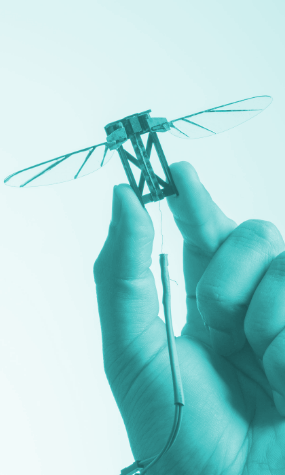Bee brains surprise scientists
 Engineers are taking design tips from the humble bumblebee.
Engineers are taking design tips from the humble bumblebee.
An international study, led by researchers from UNSW Canberra, has discovered the secret of bumblebees’ self-aware dexterous flight. The findings could have applications for the next generation of drones and autonomous vehicles.
Researchers have studied how bumblebees navigate through a tunnel with a series of gates featuring different-sized holes.
The bees were able to successfully fly through the apertures, thanks to a remarkable sense of their own size and a detailed perception of the obstacles’ openings.
By scanning the aperture, bumblebees can skilfully fit through the gates by manipulating the speed of their approach and posture, even flying sideways when the hole is smaller than their wingspan.
This behaviour requires an awareness of their body shape and dimensions relative to those of the obstacles - the first time such evidence has been seen in flying invertebrates.
Using ‘lateral peering’, a process where the bee scans a feature, using depth perception and spatial awareness, the insects build a comprehensive map of the aperture and can change their body orientation to fit through the gap, similar to how humans rotate their shoulders to fit through a narrow doorway.
The research also provides inspiration to apply the bumblebees’ attributes to robotics with potential applications for the next generation of drones and autonomous vehicle technology to deal with the challenges of flying in real-world conditions.
“Insects are fantastic models for robots because they have exceedingly small brains and yet they're able to perform overly complex tasks. Over thousands of years, nature has coded insects with some amazing attributes. Our challenge now is to see how we can take this and apply a similar coding to future robotic systems, enhancing their performance in the natural world,” says research lead author, Dr Sridhar Ravi from UNSW Canberra.







 Print
Print